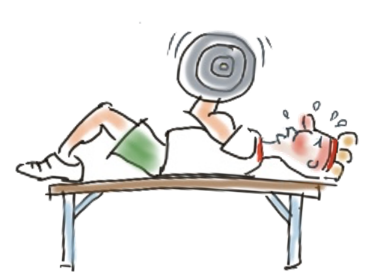INDEED - Physical activity for ageing people who experience cognitive changes: everybody should have a go!
26-06-2020
INDEED guest article by Prof Nicola Lautenschlager, Dr Amit Lampit, University of Melbourne
The global population is ageing in most geographical regions. With this trend there is an increase in the number of people around the globe who experience changes to their memory and cognition and are keen to find out which health behaviours might be effective to support their brain health. This question is of particular importance when a new clinical diagnosis of mild cognitive impairment (MCI) or dementia, for example due to Alzheimer’s Disease, has been given and healthy lifestyle behaviours become part of a holistic management plan. Why is physical activity one of the most important lifestyle factors to consider in this context? Often people with MCI or dementia experience poorer mobility and balance, a higher falls risk, and poorer physical fitness compared to people with unimpaired memory and cognitive functions.

Participating in regular physical activity can not only slow down these physical changes and risks, but also improve them again. Furthermore, a growing number of research projects have demonstrated that there can be additional health benefits, such as improvements to memory and cognition, mental health, and quality of life. Participating in a physical activity program which is individually tailored to the health needs, but also interests and preferences of a person can be a powerful approach to live a more active, socially engaged and fulfilled life including for people with cognitive impairment. Additionally, the associated improved health outcomes can help to alleviate the economic and emotional burden of cognitive impairment not only for the individual themselves, but also for their families and society as a whole. Beyond this powerful message, is there any specific advice in relation to the details when it comes to physical activity in this context? Whilst more targeted research is needed, some specific knowledge already exists.
The type, duration and intensity of physical activity matters. An ideal target should be at least 150 min of physical activity per week, but this can happen in many short sessions spread across the weeks. The most effective physical activity types are aerobic exercise and strength training. Both of these types improve health via different physiological pathways and hence a combination of both is recommended. These types also improve our heart and metabolic health, so combat vascular risk factors such as obesity, high blood pressure, high cholesterol, glucose intolerance or diabetes, etc. If possible, they should be of a moderate intensity, for example when going for a walk, the speed of the walking should be fast enough so that having a conversation at the same time would be hard to do. Whilst current knowledge about the underlying mechanisms is still quite limited, the specific benefits of physical activity for brain health seem to be delivered either through indirect mechanisms, such as the above mentioned mediation of vascular risk factor, or via direct mechanisms, such as releasing more beneficial chemicals in the brain to enhance thinking abilities. For example, the increased release of the brain derived neurotrophic factor (BDFN) during physical activity can enhance the growth of more connection between individual braincells. Other chemical changes impact on insulin sensitivity or cortisol regulation. Additional to those 2 type regular balance exercises should be performed with the aim to reduce the risk of falls.
An effective physical activity program should, as a strategy, also impact on how we carry out our daily routine tasks, e.g. walking to the shops rather than take the car; take the stairs rather than an elevator or escalator; standing during activities, such as reading, writing, working or talking on the phone, rather than sitting down, etc.
We all know how challenging it can be to change behavior and once achieved to maintain the new positive health behavior. Research to date has demonstrated that certain tolls and strategies can help to make behavior change easier. Depending on the personal preference of each person this could include having access to targeted information material from a source which is trustworthy, embedding social interaction into physical activities, starting low and go slow and steady to increase duration and intensity, creating meaningful rituals and routine around physical activity, keep an exercise diary with sharing the success of reaching new milestones with others, etc. Music can be helpful as well as choosing activities which also have a cognitive component, such as dancing or Tai Chi. When cognitive impairment calls for more support from others the approach how physical activity programs are performed needs to be adapted, e.g. allowing for more time to learn, having more breaks, not exercising alone, consider seated exercise options if a significant falls risk or frailty is present, etc.
In summary it is exciting to know that there is strong evidence from research that old people with cognitive impairment can successfully change their physical activity related health behavior with support from others and can exercise safely and with joy. However, especially for older people with chronic health conditions or who are currently sedentary, no new physical activity program should be started without consulting the general practitioner to make sure this is planned and executed in a safe way.
Original article published in “Alzheimer Info” by Deutsche Alzheimer Gesellschaft e.V. (Berlin), 2020.
Deutsche Alzheimer Gesellschaft e.V. is an Associated Strategic Partner in the INDEED project: http://dtp.interreg-danube.eu/approved-projects/indeed
